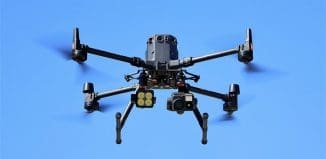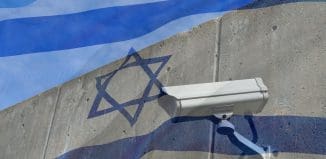Protecting Offshore Oil and Gas Facilities
This post is also available in:  עברית (Hebrew)
עברית (Hebrew)
By Boaz Zalmanovich
“There’s no doubt these resources are a strategic target for our enemies, and so I’ve decided that the state of Israel will participate in protecting its assets.” (Prime Minister Binyamin Netanyahu, 18/1/11)

Interest in offshore security grew following natural gas discoveries in Israel’s exclusive economic zone. Offshore, energy-producing regions have been common for 80 years, regions like the Persian Gulf, the Gulf of Mexico or the Blue Amazon region in Brazil. Offshore production of oil and gas has many implications on politics, economics, the environment and defense. All these aspects are interconnected. The purpose of this review is to present the main principles behind defending these facilities.
The environment: Facilities and their surroundings
The production system includes various facilities: Drilling rigs, distribution pipes, processing facilities and facilities for turning natural gas in liquefied natural gas, in addition to similar facilities for oil processing. Various tankers and service vessels are also part of the system. Distance between facilities varies as well as their altitudes, with some of them located on dry land. When planning the overall security structure, we have to take facility type and location into consideration, as well as the nature of the links between facilities.
There are various types of drilling and production rigs, suitable for different surface conditions, sea floor depths and drilling depths. Some facilities are fixed to the bottom of the sea while some float, stabilized through various methods. This also affects security.
Effects of maritime environment on facility security:
- The size of the region in which the facility is located, and the number of facilities located in the region. For example: Are all the facilities in the region one unit, or are they parts of different systems, each requiring its own security system?
- Actions at sea are conducted in three arenas: Air, surface and underwater, in addition to cyberspace (which is not included in this review). This requires a security system that can deal with each arena and its threats.
- Surface conditions, including weather, waves, currents and the nature of the sea floor, all have an effect on overall security.
- Distance from the shore affects the ability of hostile elements to act and the level of isolation from routine naval traffic. A relatively isolated facility, for example, won’t see a lot of traffic. Crowded environments require different command and control systems.
- Despite all these varying conditions, the facilities are stationary – this makes gathering intelligence on relevant threats easier.
The threats:
Designing the security for offshore facilities depends on the most probable threats. The main threats are countries with modern military capabilities; non-government organizations with long range capabilities (such as Hezbollah and Hamas); terrorist groups, organized crime or pirates. Defending facilities during war between countries requires different measures compared to protecting them against terrorists or criminals.
Possible threats include missiles, aerial strikes by planes or suicide drones, underwater attacks carried out by divers, submarines or depth charges; ramming boats or rigged explosive boats; hijacking the facility for sabotage, robbery or ransom.
iHLS – Israel Homeland Security
Principles of offshore security:
One of the main principles behind defending offshore rigs is found in international law: Exclusive Economic Zones (EEZ). Some of these facilities might be located outside territorial waters, with security limited to a 500-meter radius around them. Beyond this line any vessel can sail and do whatever it wants without harming the rig. This requires countries to form policies and regulations for sailing in the region.
Intra-country coordination. Who is responsible for protecting the facilities and their surroundings, companies or the state itself? If it’s a state responsibility, which ministry exactly? This has legal and budgetary implications, in addition to requiring close inter-ministry cooperation.
The permanent location, harsh environment and the need to operate in different arenas require a permanent and comprehensive security system, to detect, identify and respond to threats, all controlled through a central command and control system based on unmanned systems.
The rig has to be designed for security, including surface and underwater obstacles, protective measures such as machine guns, guard posts, automatically locking doorways, long- and short-range digital “fences”, underwater cameras and quick response combat teams.
A detection and early warning system, some of them with ranges of up to dozens of kilometers. Radars are best suitable for detection, in addition to other measures suitable for air, surface and underwater detection and electro-optic measures for investigation and identification.
Using unmanned systems, aerial and naval, capable of meeting most of the requirements above: Situational awareness, tracking, identification, verification, early warning, non-lethal weapons and neutralizing the threat.
Naval and aerial regional superiority is needed to create a regional protective envelope. This requires state and military involvement: Coast guard, intelligence gathering, offshore patrol vessels and aircraft, in addition to coordinating activities with the production and security companies.






























